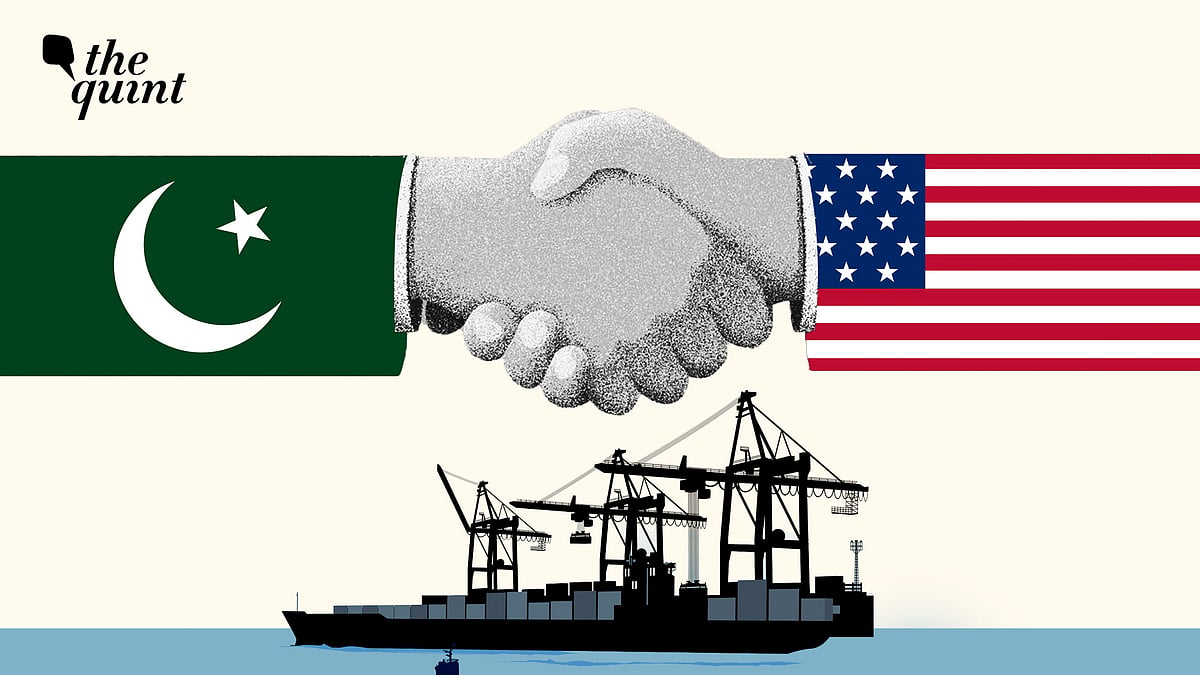
Why Pakistan’s Pasni Port Pitch to the US is Riskier Than it Looks
Pakistan's much-touted new ‘bold overture’ to the US doesn’t seem viable, writes Brig Kuldip Singh (Retd).

advertisement
Reports indicate that Pakistan’s Field Marshal Asim Munir, during his September 2025 meeting with US President Donald Trump, proposed that the US build a US$1.2 billion ‘civilian’ deep-water port at Pasni, along with a rail link into Pakistan’s mineral heartland of Baluchistan.
Apparently, Pakistan also offered to allow the US to operate Unmanned Aerial Vehicles (UAVs) from Pasni. It would be recalled that the US’s CIA used to operate armed UAVs from Shamsi airfield (near Quetta) for counter-terrorism operations till Pakistan evicted them after the US’ air-attack on Pakistani Post “Salala” in November 2011.
Ostensibly, Munir’s proposal seems to have two broad components:
Lure US companies into investing in the exploitation of “critical minerals,” particularly Rare Earth Elements (RREs). In early 2025, PM Shehbaz Sharif had claimed that Pakistan possessed mineral reserves worth trillions of dollars, most of them in the insurgency-hit province of Balochistan, and that foreign investment in this sector could alleviate Pakistan economic woes.
The second component is the offer of Pasni as a strategic port to the US. Given the recent developments, especially after the Israeli attack on Doha, the US could, if it desired, find Pasni useful as a military base for potential operations against Iran, in the Levant, and for surveillance in the Northern Arabian Sea (NAS). However, the offer isn’t as simple as it looks.
Pasni Among Pakistan’s Key Ports
Pakistan has six important ports on the NAS-rim. From east to west:
Karachi
Somiani
Ormara
Pasni
Gwadar
Jiwani
The latter four are located in Baluchistan, Pakistan’s largest province, with 44 percent of Pakistan’s total land area. Approximately 120 km west of Jiwani lies Iran’s Chabahar port, whose development by India now stands affected by the revocation (29 September) of the waiver of US sanctions against Iran. Further west lie the Gulf of Oman, the Strait of Hormuz, and the Persian Gulf, through which much of the world’s energy flows.
Military Presence and Infrastructure
Although Karachi is Pakistan Navy’s (PN) main base, other ports too have military presence. Ormara, for example, is home to the Jinnah Naval Base, and several of the PN’s new Chinese-origin Hangor-class submarines are likely to be based there in future.
Incidentally, the PN had built a full-scale test platform off Ormara, and in Jan 2014, carried out an ejection test of a ‘Babur’ cruise missile modified as a sea-launched cruise missile. Jiwani hosts a small PN airbase, while Turbat, roughly 100 km north of Pasni, is home to Naval Air Station PNS Siddique.
China is also involved in resource exploitation. However, its presence continues to face regular attacks from local Baluchis, particularly the Baloch Liberation Army, its affiliates, and similar groups, which have also targeted Pakistani infrastructure, trains, and security forces. As Gwadar is situated literally at the mouth of the Gulf of Oman, a Chinese presence there potentially allows it to monitor ship traffic through the Gulf of Oman and NAS, including movement of US Naval vessels.
Existing US Footprint in the Region
Notably, the US already has a large military presence at several bases in this region:
The US Navy’s 5th Fleet headquarter (NAVCENT) is at Bahrain
Qatar: Al Udeid Air Base
Kuwait: Camp Arifjan and Ali Al Salem Air Base
UAE: Al Dhafra Air Base and Jebel Ali port
Djibouti: Camp Lemonnier
Military personnel in Saudi Arabia and Iraq
However, a US presence at Pasni—adjacent to India-supported Chabahar port in Iran and Chinese-developed Gwadar—could have significant repercussions for Pakistan’s internal situation.
The Baloch rebel movement reportedly received support from the former USSR from the 1980s onwards, after the US-Pakistani-Saudi alliance intervened in Afghanistan. In 2019, the US had designated the Baloch Liberation Army (BLA) as a Specially Designated Global Terrorist Organisation, and in August 2025, it added the ‘Majeed Brigade’, a BLA sub-group, to its list of Foreign Terrorist Organisations (FTOs).
However, it’s plausible that Pakistan could be thinking of this as a ploy to pitch the US against the alleged (and unsubstantiated) Indian support to Baluch rebels.
A Strategic Gamble Unlikely to Pay Off
Strategically, it makes little sense for the US to consider Pasni as an operating base. Given its bases in the region and Chinese presence at Gwadar, etc, a major US presence at Pasni would risk direct confrontation with Chinese interests.
Such a presence would also not substantially augment the US’s intelligence gathering in the Gulf region or in Afghanistan. Since its withdrawal from Afghanistan, it has been operating systems like the ‘Maven’ Broad Area Surveillance-Targeting for "over-the-horizon" intelligence-gathering and surveillance over land, and UAV-based Broad Area Maritime Surveillance along with naval forces over the seas. The latter connects directly to the 5th Fleet headquarters in Bahrain.
In sum: this much-touted new ‘bold overture’ to the US doesn’t seem viable—unless, of course, there is a larger game at play with China’s tacit approval.
(The author Singh is a retired Brigadier from the Indian Army. This is an opinion piece and the views expressed above are the author’s own. The Quint neither endorses nor is responsible for the same.)
- Access to all paywalled content on site
- Ad-free experience across The Quint
- Early previews of our Special Projects
Published: undefined